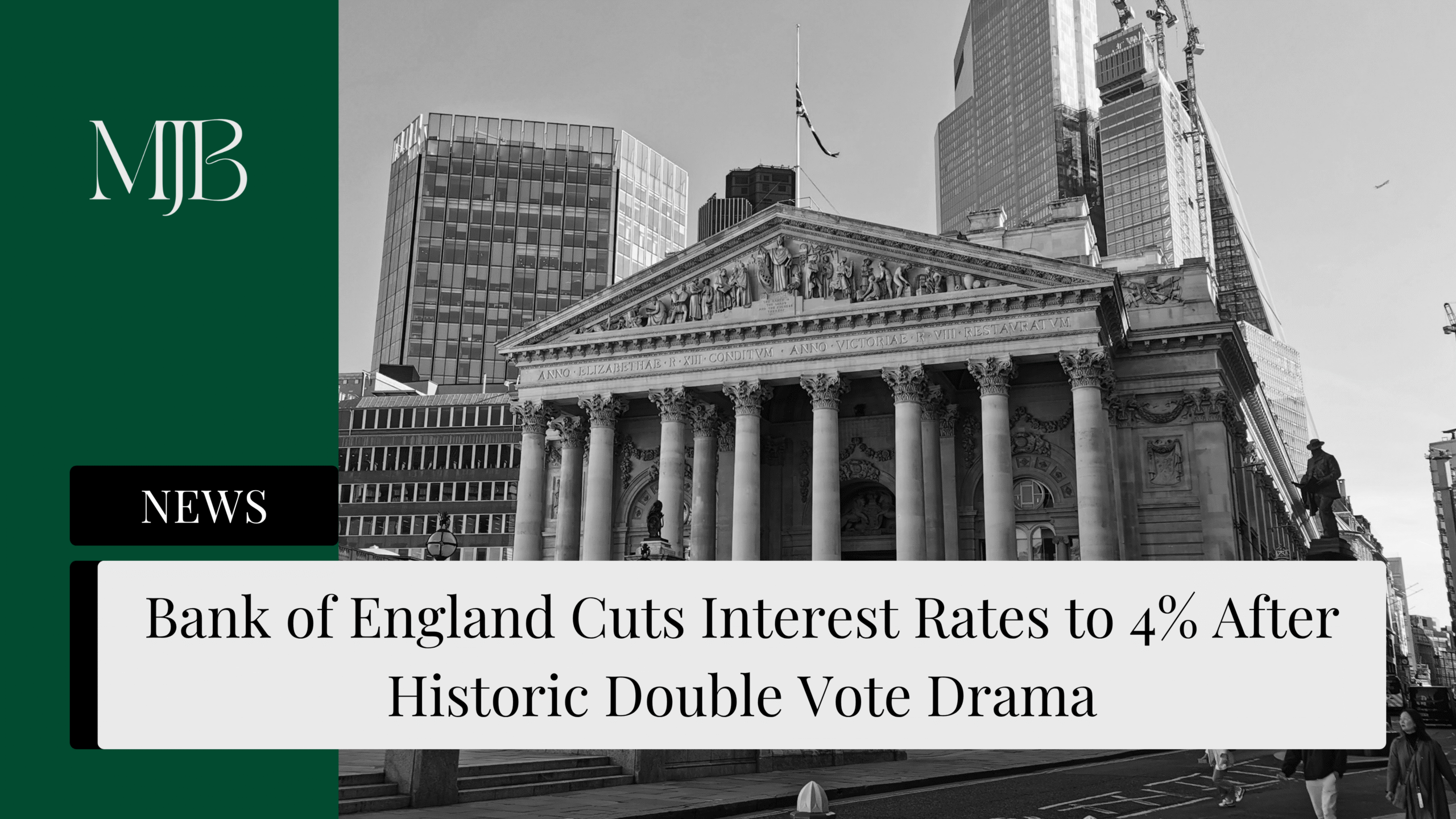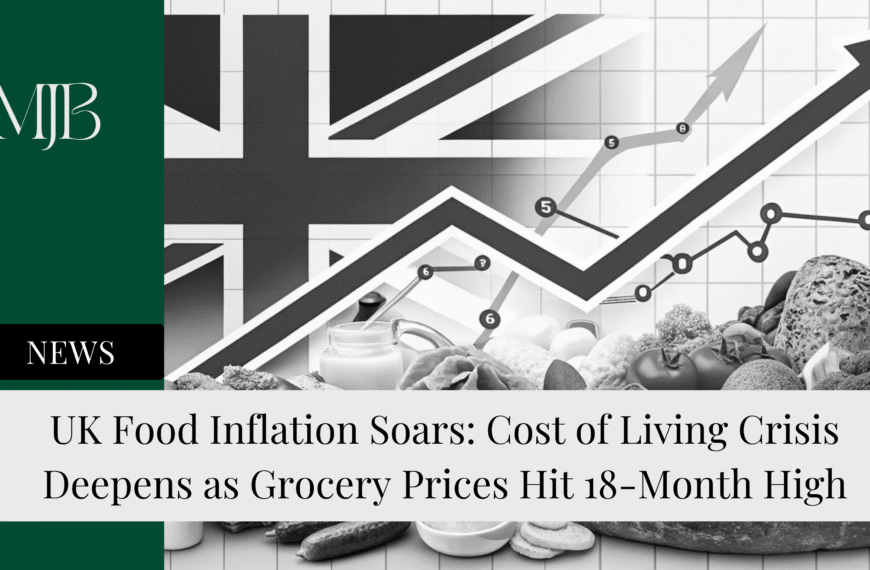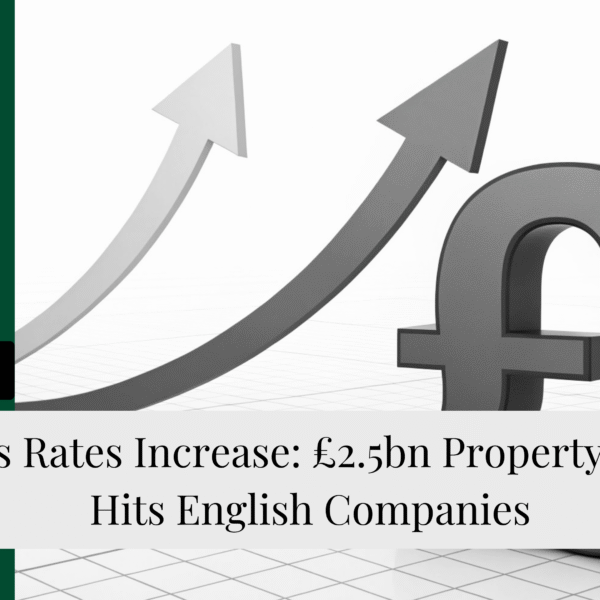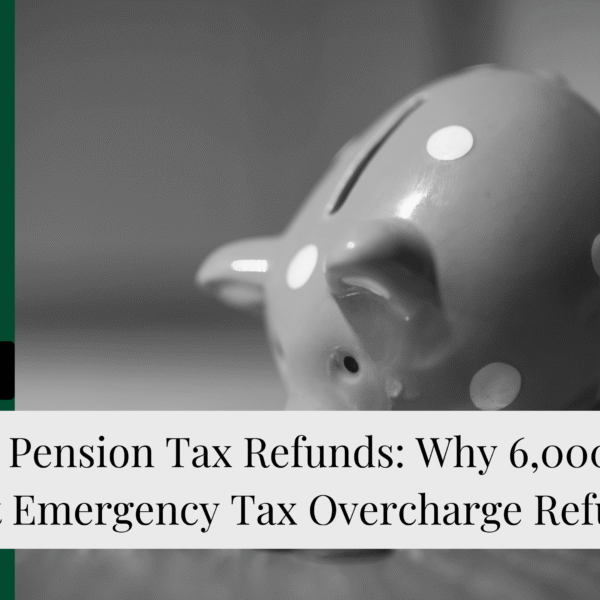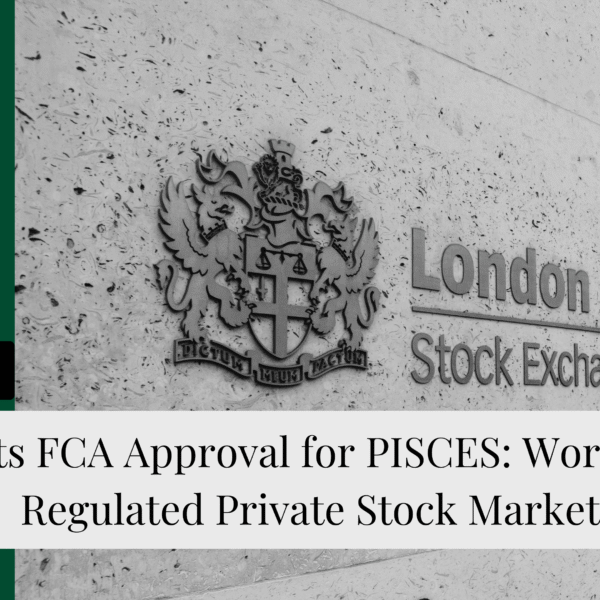The Bank Just Made History — And Your Mortgage Might Thank You
The Bank of England cut interest rates to 4% on Thursday following an unprecedented double vote that saw the Monetary Policy Committee (MPC) split 4-4-1. This marks the fifth UK interest rate cut since the election and the first time in the Bank’s history that Governor Andrew Bailey had to call a second vote to break a deadlock.
Here’s what went down: Four MPC members wanted a 25 basis point rate cut, four wanted to hold rates steady, and Alan Taylor went rogue with a 50 basis point cut proposal. After the historic second vote, Taylor backed the 25bp reduction, creating a 5-4 majority for cutting UK interest rates from 4.25% to 4%.
Why the Bank of England Rate Cut Matters (And Why It Almost Didn’t Happen)
This wasn’t your typical Bank of England interest rate decision. The Monetary Policy Committee found itself wrestling with two massive headwinds: rising UK unemployment and stubbornly high food price inflation that could hit 5.5% by year-end.
“We have cut interest rates today, but it was a finely balanced decision,” Governor Andrew Bailey admitted. “Interest rates are still on a downward path, but any future rate cuts will need to be made gradually and carefully.”
The MPC’s Economic Tug-of-War
Team Cut (Bailey, Breeden, Ramsden, Dhingra, Taylor) argued that UK unemployment — now at 4.7% and potentially heading to 5% by 2026 — needed urgent attention. Taylor even warned about “increased risk of a UK recession” if the Bank of England didn’t act on interest rates.
Team Hold (Greene, Lombardelli, Mann, Pill) worried about “second-round effects” where high UK wage growth keeps pushing inflation higher. They’re essentially afraid of letting the inflation genie back out of the bottle.
What’s Driving UK Inflation Higher in 2025?
The Bank of England expects UK inflation to hit 4% by September 2025 (it’s currently at 3.6%). Three big culprits are making everything more expensive for British consumers:
- Rachel Reeves’ £20bn employer tax raid — businesses are passing costs to consumers
- New packaging waste regulations hitting UK businesses in October — could add 0.5 percentage points to inflation
- Energy market volatility and supply chain issues pushing UK food prices higher
The kicker? The Bank of England doesn’t expect to hit its 2% inflation target until 2027. That’s three more years of above-target inflation in the UK.
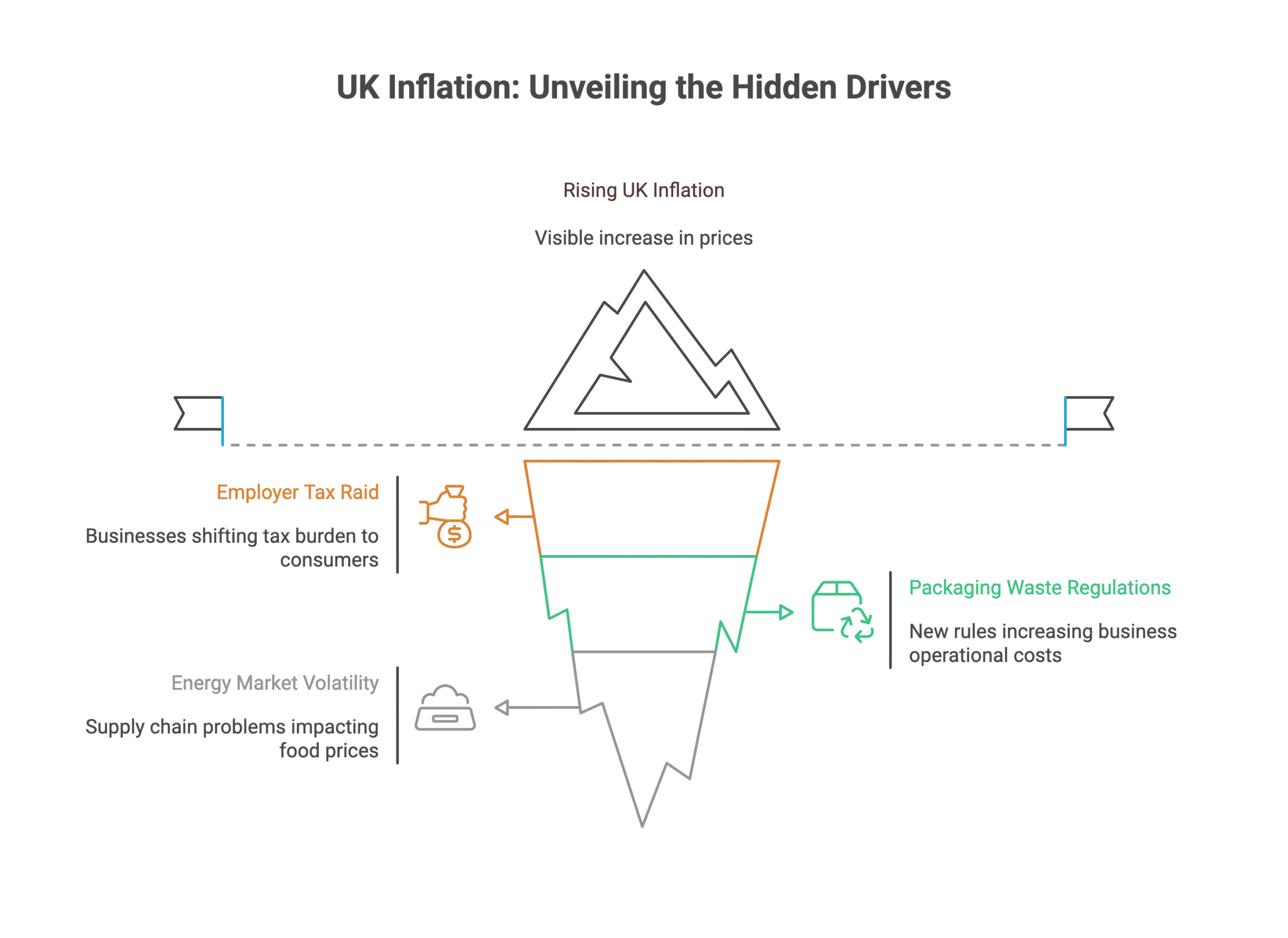
Bank of England Growth Forecasts: The Reality Check
Here’s where it gets dicey for the UK economy. The Bank of England is forecasting just 1.2% GDP growth this year and 1.3% next year — hardly champagne-popping numbers. The MPC even took a subtle swipe at Labour’s fiscal policies, suggesting recent government moves could “weigh down on GDP growth.”
Chancellor Rachel Reeves tried spinning the Bank of England rate cut positively, calling it the “fifth interest rate cut since the election” and claiming it shows her economic plan is working. The markets aren’t entirely convinced about UK growth prospects.
What This Bank of England Rate Cut Means for Your Money
The good news: UK mortgage rates should edge lower, giving British homeowners and buyers some breathing room. Variable-rate mortgage holders will see immediate relief from the Bank of England’s decision.
The reality check: With UK inflation staying elevated and Bank of England rate cuts coming “gradually and carefully” (Bailey’s words), don’t expect a return to ultra-cheap money anytime soon.
The wildcard: Trump’s tariffs could shake up UK trade further, potentially forcing the Bank of England’s hand on future interest rate decisions.
How the Historic MPC Vote Unfolded
This Bank of England decision made history. The only other time votes were tied 4-4 was in March 1998 when the MPC was short one member. Back then, former Bank of England Governor Mervyn King made the final call on UK interest rates.
Thursday’s split revealed deep divisions about the UK’s economic trajectory. The Bank of England’s monetary policy report highlighted concerns about Labour’s tax policies creating “more sudden adverse developments” in the UK jobs market.
Bottom Line on Bank of England Interest Rates
The Bank of England just showed us how divided UK policymakers are about Britain’s economic future. While Thursday’s interest rate cut offers some relief for mortgage holders, the historic MPC split vote reveals deep uncertainty about whether they’re fighting inflation or recession.
For now, British consumers can enjoy slightly lower borrowing costs — but keep your expectations in check. This Bank of England tightrope walk between controlling inflation and supporting UK growth is far from over.
FAQ: Bank of England Interest Rate Cut
Q1: Why did the Bank of England need two votes on interest rates?
A: The initial MPC vote split 4-4-1, with no majority. Governor Bailey called an unprecedented second vote where Alan Taylor switched from demanding a 50bp cut to supporting the 25bp reduction, creating a 5-4 majority for the rate cut.
Q2: When will UK inflation reach the Bank of England’s 2% target?
A: The Bank of England doesn’t expect UK inflation to hit its 2% target until 2027. September 2025 could see inflation rise to 4%, driven by food prices and business costs from Labour’s policies.
Q3: How will the Bank of England rate cut affect my mortgage payments?
A: Variable-rate mortgages will see immediate reductions following the Bank of England’s decision. Fixed-rate mortgage deals should gradually improve, though the MPC’s “gradual and careful” approach means dramatic drops are unlikely.
Q4: What’s the UK unemployment outlook according to the Bank of England?
A: Currently at 4.7%, UK unemployment could hit 5% by mid-2026 according to Bank of England forecasts. This deteriorating UK jobs market was a key factor pushing some MPC members to vote for interest rate cuts.
Q5: Will the Bank of England cut interest rates again soon?
A: Governor Bailey stressed future Bank of England rate cuts will be “gradual and careful.” The MPC’s 4-4-1 split shows the committee remains deeply divided on UK monetary policy, suggesting aggressive cuts are off the table.
DISCLAIMER
Effective Date: 15th July 2025
The information provided on this website is for informational and educational purposes only and reflects the personal opinions of the author(s). It is not intended as financial, investment, tax, or legal advice.
We are not certified financial advisers. None of the content on this website constitutes a recommendation to buy, sell, or hold any financial product, asset, or service. You should not rely on any information provided here to make financial decisions.
We strongly recommend that you:
- Conduct your own research and due diligence
- Consult with a qualified financial adviser or professional before making any investment or financial decisions
While we strive to ensure that all information is accurate and up to date, we make no guarantees about the completeness, reliability, or suitability of any content on this site.
By using this website, you acknowledge and agree that we are not responsible for any financial loss, damage, or decisions made based on the content presented.

